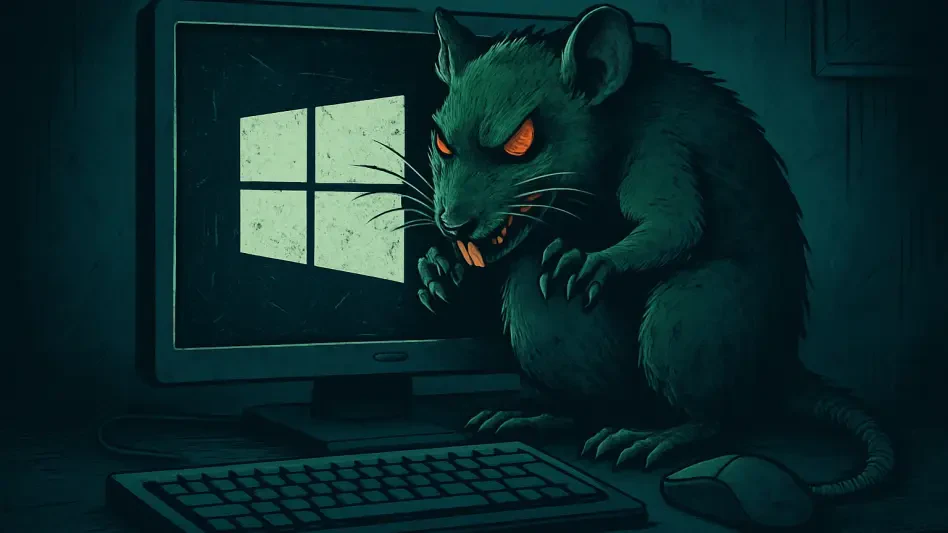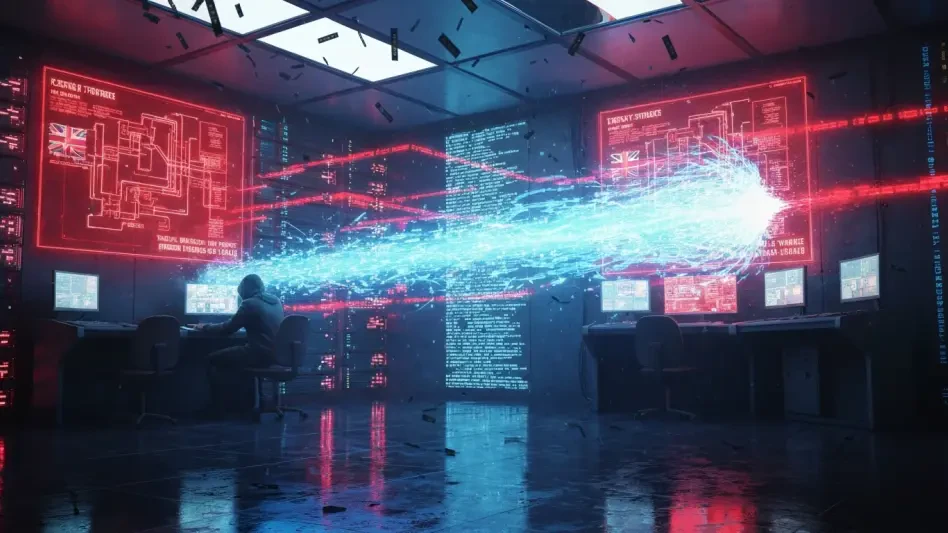In an era where cyber threats evolve at an alarming pace, a newly discovered Remote Access Trojan (RAT) has emerged as a formidable challenge for Windows users worldwide. Dubbed MostereRAT by security researchers, this malware employs an intricate blend of social engineering and advanced technical maneuvers to infiltrate systems, often bypassing traditional defenses with ease. Unlike conventional banking trojans, this campaign leverages legitimate remote access tools such as AnyDesk and TightVNC to establish covert control over compromised devices. The sophistication of these attacks highlights a disturbing trend in cybercrime, where attackers seamlessly blend malicious intent with everyday software functionality. As organizations scramble to protect sensitive data, understanding the mechanisms behind this threat becomes paramount. This article delves into the intricate workings of the campaign, exploring its infection strategies, technical innovations, and the broader implications for cybersecurity in an increasingly digital landscape.
Unveiling the Attack Strategy
The initial stage of the MostereRAT campaign often begins with meticulously crafted phishing emails that masquerade as legitimate business correspondence, tricking unsuspecting users into engaging with malicious content. These emails direct victims to a deceptive website where they are prompted to download a seemingly innocuous Word document. Hidden within this document lies a dangerous archive that, once opened, triggers a silent installation process. Remarkably, the payload evades detection by standard antivirus and endpoint detection and response systems, showcasing the malware’s ability to operate under the radar. The multi-stage delivery mechanism obscures its true purpose, using an executable built on a wxWidgets sample to decrypt additional modules. These components are discreetly placed in system directories, ensuring persistence while avoiding scrutiny. This cunning approach to infiltration underscores the importance of user awareness and robust email filtering solutions to intercept such threats before they take root in an organization’s network.
Once embedded, MostereRAT demonstrates a chilling level of control by installing services that guarantee its survival across system reboots. Two specific services, one for automatic startup and another for on-demand operations, are created with SYSTEM privileges, granting the malware unfettered access to critical functions. Beyond persistence, the attack flow involves disabling essential Windows security processes and altering registry settings to prevent updates or notifications that might alert users to its presence. This calculated suppression of defenses allows the malware to maintain a low profile while carrying out its objectives. The use of mutual TLS for encrypted command-and-control communications further complicates efforts to intercept or analyze its network traffic. Such tactics reveal a deep understanding of Windows architecture by the attackers, emphasizing the need for advanced monitoring tools capable of detecting subtle anomalies in system behavior that might indicate a breach.
Technical Sophistication and Evasion Tactics
At the heart of MostereRAT’s operations lies a first-stage executable that decrypts primary modules directly into memory, minimizing traces on the disk that could trigger alerts. These modules manage a range of malicious activities, from keystroke logging and screenshot capture to deploying remote management tools that grant attackers real-time access to infected systems. Encrypted configuration files retrieved from command-and-control servers are verified through sophisticated hash comparisons, ensuring that only authorized updates are applied. This adaptability, paired with an embedded RSA private key, allows the malware to evolve continuously, countering attempts to neutralize it. The seamless integration of legitimate software into its attack framework makes distinguishing malicious activity from normal operations a daunting task for security teams. This level of technical prowess signals a shift toward more resilient threats, urging the adoption of behavior-based detection systems over traditional signature-based approaches.
Another layer of complexity in MostereRAT’s design is its ability to maintain long-term access through multi-layered evasion tactics that thwart conventional security measures. By exploiting trusted tools for malicious purposes, the malware blends into routine network traffic, making it nearly invisible to standard monitoring protocols. Its self-updating capability ensures that even if one component is detected, others can adapt and persist, creating a cat-and-mouse game with defenders. The campaign’s focus on stealth and resilience highlights a broader trend in cybercrime where attackers prioritize sustained access over immediate exploitation. This persistent threat model demands a reevaluation of current defense strategies, pushing organizations to invest in comprehensive threat intelligence and real-time analytics. Without such measures, systems remain vulnerable to prolonged compromise, potentially leading to significant data breaches or operational disruptions over time.
Strengthening Defenses Against Evolving Threats
The emergence of MostereRAT serves as a stark reminder of the limitations of traditional cybersecurity tools against highly sophisticated attacks. Security operations must evolve to incorporate advanced threat detection systems capable of identifying anomalous behavior that deviates from normal user patterns. Comprehensive monitoring across endpoints and networks can provide early warnings of potential compromises, even when malware operates covertly. Equally critical is the role of user education in recognizing phishing attempts, as human error often serves as the entry point for such campaigns. Organizations should prioritize regular training to equip employees with the skills to identify suspicious communications. Additionally, leveraging premium threat intelligence services can enhance the capabilities of Security Operations Centers, offering insights into emerging threats and attacker methodologies. These proactive steps are essential to fortify defenses against adversaries who continually refine their tactics to exploit vulnerabilities.
Looking back, the MostereRAT campaign exposed significant gaps in cybersecurity frameworks that many organizations relied upon. Its ability to merge social engineering with technical sophistication challenged even well-prepared systems, underscoring the relentless innovation of cybercriminals. As defenders worked to dissect its mechanisms, the importance of adaptive strategies became evident. Future considerations included a stronger emphasis on collaborative threat intelligence sharing to anticipate similar attacks. There was also a push toward integrating machine learning-driven tools to predict and mitigate risks before they materialized. By reflecting on these past encounters, the cybersecurity community gained valuable lessons, paving the way for more resilient protections. Moving forward, the focus must remain on staying ahead of evolving threats through innovation, vigilance, and a commitment to continuous improvement in defense mechanisms.








